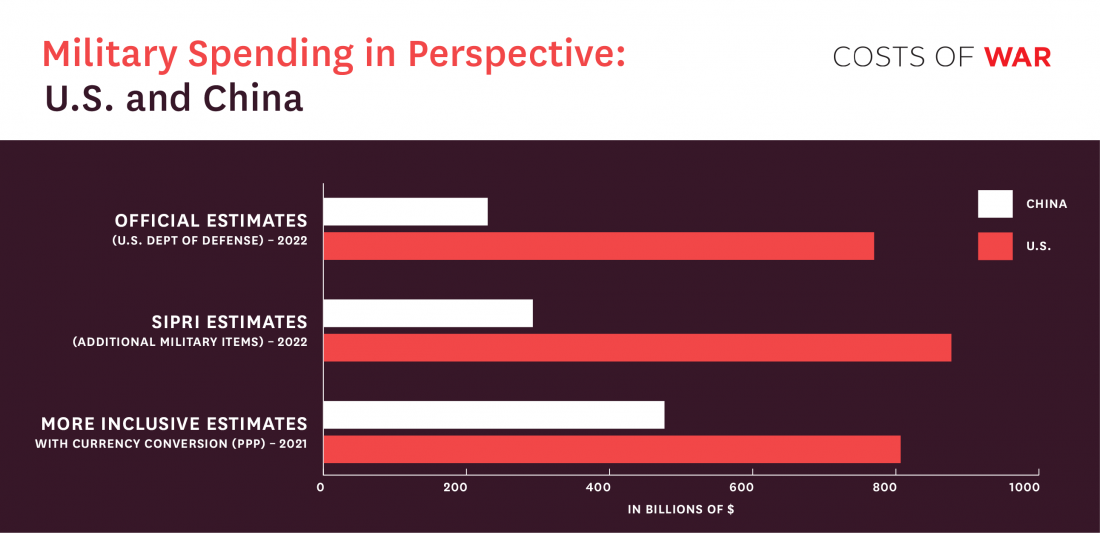Reality Check: Chinese Military Spending in Context

Some experts have argued that China’s military expenditures are far higher than official reporting would suggest, with one Senator claiming that China’s spending is roughly on par with U.S. spending. This report reveals that the U.S. continues to outspend China on defense by a substantial margin.
The analysis of official military spending figures, taking into account purchasing power and the full range of China’s military-related activities, estimates China’s spending was between $292 - $476 billion in 2022. The annual analysis by the Stockholm International Peace Research Institute (SIPRI), which estimates the full range of military spending by country beyond official figures, puts China’s military spending at $292 billion in 2022, compared to U.S. spending of $877 billion in the same year. Accounting for the full range of military spending and purchasing power parity, Chinese spending ($476 billion) was 59% of U.S. spending ($806 billion) in 2022.
This paper cautions that more military spending to counter China will not lead to greater security. A war between China and the United States over the status of Taiwan would come at a high cost for all concerned and might even escalate into a nuclear confrontation, notes the paper.
The paper also reveals that China currently represents little or no direct threat to the United States. The Chinese military is not presently configured, aside from nuclear forces, to strike the U.S. in a serious way, with its extremely limited capabilities to project power outside of its immediate region: few aircraft carriers, few attack submarines, few amphibious attack ships, few transports/refueling aircraft, and little combat experience. Beijing has not fought a major war in more than 40 years.
This report further notes that the United States and China need to work together to solve pressing urgent global problems such as climate change and the spread of disease.

